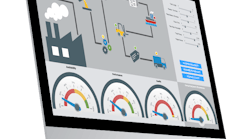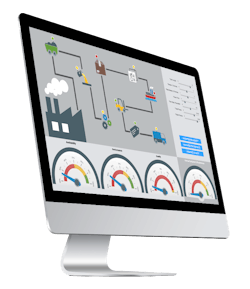Manufacturing is a fast-paced industry where success is dependent on timing and quality. That’s why it is crucial to constantly monitor every stage of the production process.
Defining and tracking key performance indicators (KPIs) can help manufacturers hone in on what is contributing to, or taking away from, their success. Monitoring performance data can also help workers set and achieve goals. While most KPIs will vary according to each organization’s unique needs, there are five key metrics that all manufacturing plants should be monitoring if they are concerned about eliminating waste through lean production.
Lean manufacturing KPIs.
KPIs to Make Your Manufacturing Processes Lean
Lean thinking involves going through every step of the manufacturing process to determine which ones contribute the most value and where improvements can be made. These KPIs are directly tied into the main concerns of a manufacturer: profitability, productivity, quality, and efficiency.
Throughput
Throughput allows companies to measure the amount of time required for raw materials to pass through the manufacturing process and become finished goods. It covers the entire timeframe from when raw materials first enter manufacturing to when finished goods exit, which includes these periods:
- Processing time. Time spent transforming raw materials into finished goods.
- Inspection time. Time spent inspecting materials and finished goods.
- Move time. Time spent moving items into and out of the manufacturing area.
- Queue time. Time spent waiting before the other timed activities (processing, inspection, and move).
Dashboard monitoring the production process.
You can optimize the amount of throughput in your system by reducing the time required by the manufacturing process. When done correctly, it will lead to an increase in the profitability of the plant.
Reject Ratio
Production processes occasionally produce scrap. These failed assemblies or materials that can’t be repaired are measured in terms of reject ratio. When you have a high reject ratio, it is an indication that you need to make a change—whether it’s replacing faulty machinery, low-quality raw materials, or ineffective operators. Minimizing scrap helps organizations meet profitability goals and deliver high-quality products to their customers.
Overall Equipment Effectiveness (OEE)
OEE multiples the total production availability by performance and quality to determine the utilization of resources. When the OEE increases, it indicates a more efficient utilization of machinery. It is seen as the gold standard for measuring manufacturing productivity. An OEE score of 100% would mean that a plant is only manufacturing good parts, as fast as possible, without stopping. Monitoring OEE can help manufacturers identify losses, benchmark progress, and eliminate waste.
Takt Time
Takt time is the amount of time that it takes to complete a task—whether that be the time it takes to produce a product or the cycle time for an operation. Tracking this information helps a manufacturer identify and alleviate bottlenecks. It is a crucial metric for optimizing your team’s capacity, reducing the waste of your process, and maintaining a continuous flow of work. When takt time is defined, it gives everyone a better idea of what “success” looks like at every stage of the manufacturing process.
Production Uptime
Production uptime is the percentage of the total run time available that is actually used for production. It is sometimes preferred to measuring downtime because it incorporates all of the possible downtime causes, both unscheduled and planned. The main factors that inhibit machine availability are machine set-up and adjustment time, as well as equipment breakdowns. It’s important to track and include all of possible factors to get a better representation of productivity—when the plant is actually producing goods.
Samantha Marsh is marketing content coordinator at iDashboards.



